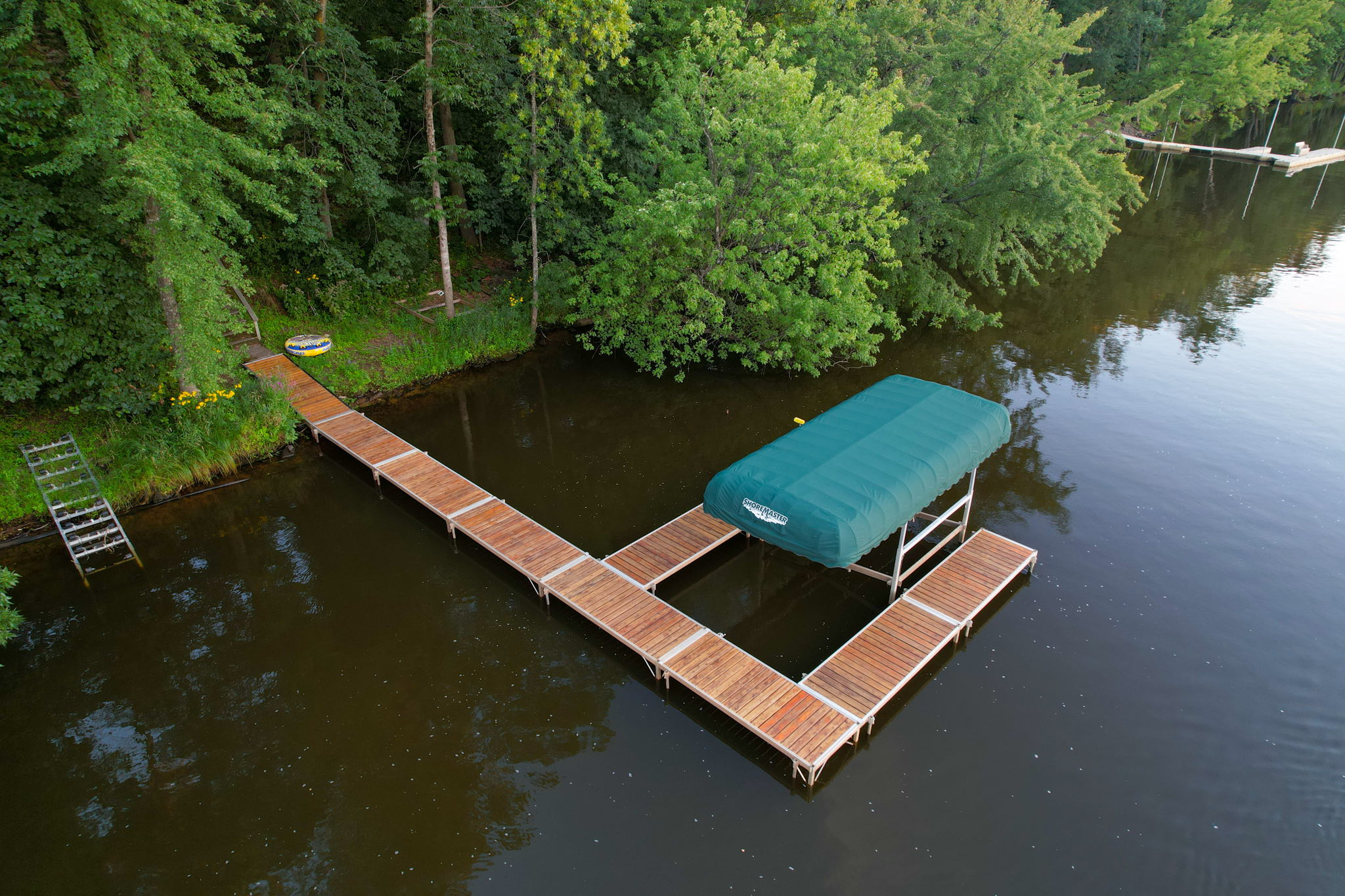Maximizing Your Outdoor Area with Specialized Floating Dock Services
Maximizing Your Outdoor Area with Specialized Floating Dock Services
Blog Article
Develop the Perfect Docking Service With Floating Docks
Floating docks present a functional solution for a range of maritime requirements, adapting effortlessly to changing water degrees and varied vessel types. Their modular nature enables rapid installment and relocation, yet the option of suitable products and design attributes is important for guaranteeing both functionality and aesthetic allure. As we discover the crucial components that add to the effectiveness of floating docks, numerous crucial aspects regarding security and maintenance will certainly emerge, questioning about just how to optimize your docking experience. The subsequent discussion will brighten these vital considerations.

Benefits of Floating Docks
Floating docks offer countless advantages that make them an excellent selection for numerous maritime applications. Unlike dealt with docks, floating docks rise and fall with the trend, ensuring consistent availability for vessels.
In addition, floating docks are commonly much easier and quicker to install contrasted to standard fixed structures. Their modular layout enables straightforward setting up and disassembly, helping with maintenance and moving when required. This flexibility is specifically helpful for temporary applications or in environments where conditions might transform.
Floating docks additionally have a tendency to be much more ecologically pleasant, as they minimize interruption to the seabed and bordering water ecological communities. Their resilient nature minimizes the danger of damage to marine life, promoting a much healthier environment. These docks can be customized to fit numerous vessel dimensions, making certain that they fulfill details functional requirements.
Inevitably, the combination of versatility, ease of setup, and ecological factors to consider makes floating docks a highly effective option for a vast array of maritime needs.
Choosing the Right Products
Selecting the proper products for floating docks is essential to make sure longevity, resilience, and security. The choice of products straight affects the dock's performance in various environmental problems, including exposure to water, sunlight, and prospective wear from aquatic website traffic.
Typical products made use of for floating docks include aluminum, timber, and high-density polyethylene (HDPE) Aluminum is lightweight, corrosion-resistant, and calls for minimal maintenance, making it an exceptional option for longevity. Nonetheless, its first cost can be higher contrasted to other materials.
Timber, while aesthetically appealing and providing a standard appearance, can be prone to rot and bug damages otherwise appropriately treated. Utilizing pressure-treated wood or naturally sturdy varieties like cedar or redwood can mitigate these problems.
HDPE is a prominent option due to its resistance to UV rays and chemicals, in addition to being eco pleasant. floating dock company. It is lightweight and available in different shades, enabling modification
Eventually, the right product selection will certainly depend upon particular requirements, including spending plan, desired aesthetics, and ecological considerations. Mindful examination of these factors will certainly result in a resistant and successful floating dock remedy.
Style Factors To Consider for Security
When designing floating docks, making certain stability is a basic aspect that can dramatically impact their capability and security. Security in floating dock design is influenced by various variables, including buoyancy, weight distribution, and the plan of elements. An optimum buoyancy system need to make use of products that give adequate lift while decreasing weight. This balance makes certain that the dock stays above water, even under varying lots.
Weight distribution is critical; equally dispersing lots throughout the dock protects my latest blog post against turning and boosts security. This can be attained via critical placement of docking equipment, such as cleats and fenders, as well as correct spacing of drifts. In addition, the dimensions of the dock ought to be thoughtfully intended. Bigger layouts can use boosted security, specifically in go to these guys harsh water problems, while longer docks might call for extra supports to stop drooping.
One more vital factor to consider is the ecological effect, consisting of wave activity and wind. Incorporating features such as sidewalls or skirting can aid reduce the results of environmental forces, keeping stability in damaging problems. Ultimately, a mix of thoughtful layout, material choice, and understanding of environmental factors will certainly generate a drifting dock that meets both stability and safety demands.
Setup Tips and Strategies

Next, secure the necessary permits and follow local laws, which may dictate installment approaches and environmental factors to consider. If needed, engage a qualified service provider experienced in floating dock installments. Use top quality products designed for marine atmospheres to improve longevity and long life.
When positioning the dock, straighten it alongside the coastline to assist in easy access. Ensure that the anchoring system is durable, utilizing cinder block or helical supports to support the dock versus wind and wave activity. It's crucial to make up seasonal water degree changes, including prospective ice motion in chillier environments.
Throughout the installment, verify the dock's floatation and stability before settling the anchoring. On a regular basis inspect the installment for any type of indicators of wear or damage. By adhering to these methods and pointers, you can accomplish a protected, practical, and more tips here aesthetically pleasing floating dock installation that satisfies your needs.
Maintenance and Treatment Standards
Caring and preserving for floating docks is crucial to prolonging their lifespan and making certain safe usage. Routine inspections should be performed to recognize any type of signs of wear, damage, or marine growth. Search for fractures, loose fittings, or tarnished locations on the dock's surface, as these problems can endanger structural integrity.
Cleaning up is crucial. Use a pressure washing machine to remove algae, barnacles, and debris, which can build up in time. For persistent development, think about environmentally friendly cleansing representatives that will not hurt marine life.
Furthermore, examine the mooring lines and supports regularly to guarantee they are secure and totally free from deterioration. Replace any kind of frayed or damaged lines quickly to preserve stability.
During extreme climate, such as tornados or freezing problems, take preventive procedures. Protect the dock with added mooring lines and, if feasible, remove any kind of removable elements to prevent damage.
Final Thought
Finally, the implementation of floating docks provides a reliable and functional docking solution ideal for numerous maritime applications. Their adaptability to rising and fall water levels, integrated with a modular design, enables simple modification and moving. Choosing ideal materials enhances both longevity and visual charm, while mindful consideration of stability ensures safety and longevity. With proper installation and routine upkeep, floating docks can give effective and trustworthy docking experiences for a vast array of vessels.
As we explore the essential components that add to the effectiveness of floating docks, a number of crucial aspects concerning stability and upkeep will emerge, raising questions concerning how to enhance your docking experience. Unlike fixed docks, floating docks increase and autumn with the trend, making sure consistent availability for vessels.When developing floating docks, making certain security is a basic facet that can considerably affect their capability and security. Stability in floating dock layout is affected by various factors, consisting of buoyancy, weight circulation, and the plan of parts. Ultimately, a combination of thoughtful design, product selection, and understanding of environmental variables will produce a floating dock that satisfies both security and security demands.
Report this page